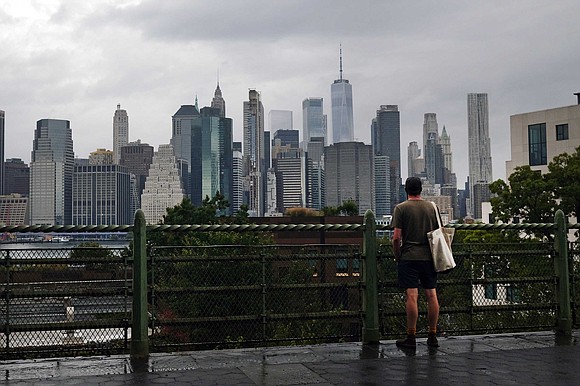Travel to New York City during Covid-19: What you need to know before you go
CNN/Stylemagazine.com Newswire | 3/30/2021, 10:25 a.m.
CNN Staff
(CNN) -- If you're planning to travel to New York City, here's what you'll need to know and expect if you want to visit during the Covid-19 pandemic.
The basics
New York City was the US epicenter of the Covid-19 pandemic in March 2020, with hospitals struggling to cope with the influx of patients.
After an easier summer, it experienced a rise of infections at the end of 2020 into January and new lockdown measures were imposed. Those numbers have dropped substantially, though researchers have reported a disturbing new variant of the coronavirus in the city.
What's on offer
This is the ultimate city break. New York has the greatest city skyline in the world; culture from the Guggenheim to MoMA; spectacular food, from Chinese delicacies in Flushing to Italian delights in the Bronx; and the green sweep of Central Park to the busy Lower East Side.
Who can go
New York is subject to US government rules, meaning travel from Brazil, China, the European Schengen Area, Iran, Ireland, South Africa and the United Kingdom is not permitted. Exemptions are available for US citizens, family members or permanent residents. Travel from all other countries is allowed.
All air travelers entering the United States are now required to have a negative Covid-19 test result.
Travelers from out of state are allowed into New York State, with some restrictions (see below).
What are the restrictions?
New York has stringent measures for those traveling domestically and internationally.
Travelers from states contiguous to New York are exempt from quarantine or testing requirements but must fill out the state's Traveler Health Form. Full instructions can be found on the Covid-19 travel advisory site.
Travelers from other states are allowed into New York state but currently are required to quarantine for 10 days or use a testing regimen to shorten quarantine. To shorten it, a Covid-19 PCR test must be taken within three days before arrival with a negative result, travelers must then quarantine for three days, then take a second test with a negative result.
However, domestic travelers will no longer be required to quarantine after entering New York from another US state or territory starting April 1, although the health department still recommends quarantine after domestic travel as an added precaution.
Domestic travelers from other states who have been fully vaccinated within the past 90 days no longer have to test and quarantine.
Mandatory quarantines will remain in effect for international travelers after April 1.
All travelers must continue to fill out the state's Traveler Health Form.
Every air traveler entering the US needs a negative Covid-19 test result. Passengers are required to get a viral test within three days before their flight to the US departs, and to provide documentation of their lab results or documentation of having recovered from Covid-19.
What's the Covid situation?
After months of falling daily cases in New York City, the number of infections started to climb again in the autumn of 2020, with a record high in early January before starting to decline again. More than 30,000 total confirmed and probable deaths, and 824,000 total confirmed or probable cases, were registered as of March 26.
What can visitors expect?
New York's busy streets fell quiet at the start of the pandemic and recovery has been slow in the months since, although many areas, including Brooklyn, are busy again.
On March 22, capacity for outdoor gatherings increased to 25 people. The limit for indoor gatherings will remain at 10 people.
For social gatherings in public spaces, capacity limits for indoor events have increased to 100 people and outdoor event capacity is now at 200 people.
Social distancing and mask requirements remain for gatherings.
Starting April 2, venues for events, arts and entertainment will be allowed to reopen at 33% capacity, capped at 100 people indoors and 200 people outdoors. If there's attendee testing, capacity will increase to 150 people indoors and 500 people outdoors -- with distancing and face covering requirements.
Indoor dining expanded to 50% capacity on March 19.
Outdoor dining continues, with restaurants and bars building ad hoc structures. Bars and restaurants must close at 11 p.m.
Museums are open, but have started mandating timed reservations, in a bid to comply with lower capacity rules. MoMA, the Museum of Natural History and the Whitney are all operating a policy of prebought tickets only. Visitors should expect temperature checks on arrival.
Nonessential retail is open. Masks are mandatory in public, however, and social distancing guidelines must be adhered to at all times.
The state of New York recently announced the Excelsior Pass, which allows people who have received a negative test or a vaccination in New York state to provide proof of their status. The digital pass is not a requirement for venues or events that require testing or vaccinations to enter, so a traveler from another state could use their own vaccination card or lab test result to enter.
Useful links
New York State Covid-19 microsite
New York State Traveler Health Form
Our recent coverage
Check out our New Yorker's guide to eating out safely during the pandemic, or read about bar Dante, which was named the second best in the world this year.
Consider a post-pandemic stay at the first hotel on Roosevelt Island, a sliver of an island in the East River with a notorious past.
Want to eat great Indian food? You'll find it across the water in New Jersey. Or salivate over New York cheesecake in our list of the world's best desserts.




